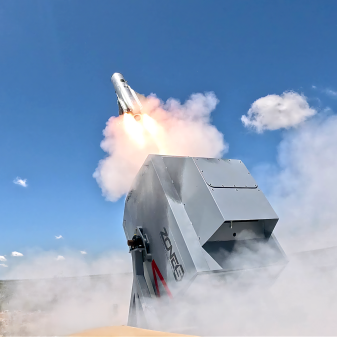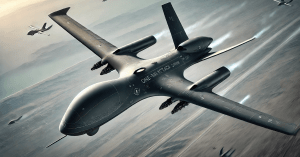Navy identifies 4 vendors to compete for COCO drone ISR services

The Navy plans to give four companies the opportunity to compete for delivery orders to provide intelligence, surveillance and reconnaissance support via contractor-owned, contractor-operated (COCO) drones, according to a pre-solicitation.
Program officers have been looking to expand the vendor pool for these types of services, which enable the U.S. military to boost its ISR capacity without having to buy and maintain additional systems and manage their full lifecycles. Insitu and Textron System have been providing them to the Navy under basic ordering agreements, but earlier this year officials indicated that they were looking to tap additional firms as the previous deals were set to expire.
In a pre-solicitation published last week, Naval Air Systems Command’s program executive office for unmanned aviation and strike weapons (PMA-263) announced “its intention to establish and issue delivery orders” under four basic ordering agreements for land and sea-based unmanned aerial system services “on a limited source basis” to four vendors: AeroVironment (AV), Shield AI, Insitu and Textron.
“PMA-263 has a requirement to provide UAS ISR services in support of multiple combatant commands. Contractors will be responsible for resources to produce sensor data, such as trained personnel, non-developmental UAS equipment, certifications, operation and maintenance, spares and product support. Contracted services would be in direct support of ISR missions requiring around the clock imagery and other sensor capability in support of those missions,” officials wrote in the document outlining the Navy’s plans.
“It is intended that these companies will compete for each opportunity and the successful offeror will be awarded the resulting delivery order under a corresponding BOA. It is anticipated that these services will support domestic and coalition military partners in combat and contingency operations based on Joint Urgent Operational Needs (JUONs), Fleet Top Level Requirements (TLR), and other operational requirements documents,” they added.
The pre-solicitation did not provide additional details about the specific capabilities that the contractors are expected to provide.
However, in an RFI released earlier this year, the Navy expressed an interest in runway independent, “multi-intelligence” capable UAS with an operational range of at least 75 nautical miles from a ground control station located at the launch site, 10 hours time-on-station, a variety of sensing capabilities — including full-motion video, electro-optical and infrared sensors, and an electronic warfare “type” sensor or wide area maritime search sensor — and the ability to operate effectively in adverse weather conditions, austere environments and areas where GPS navigation is degraded, among other requirements.






